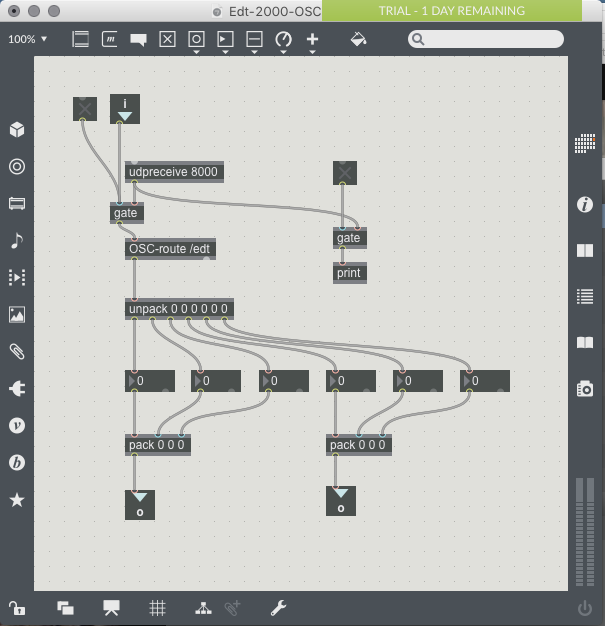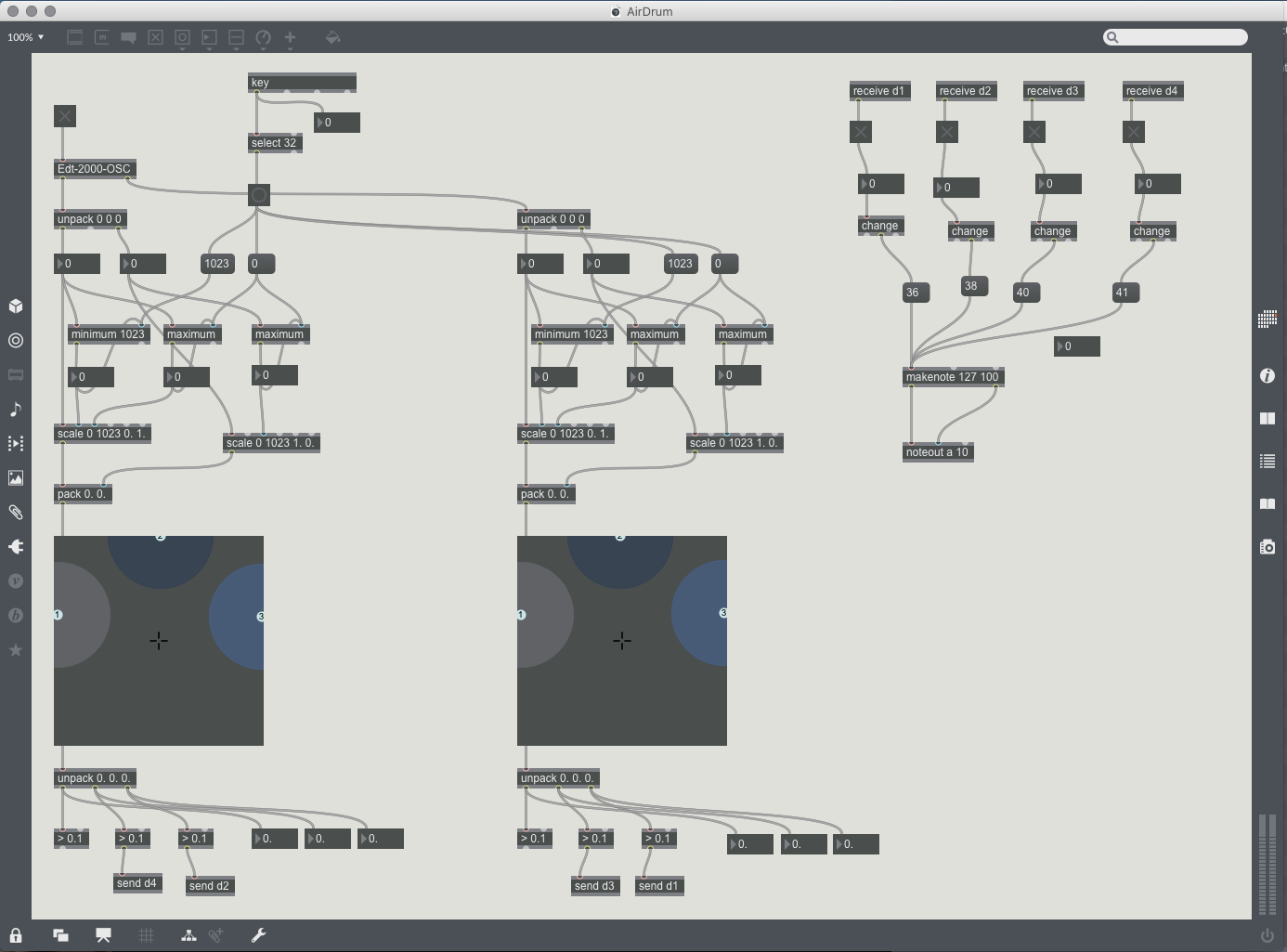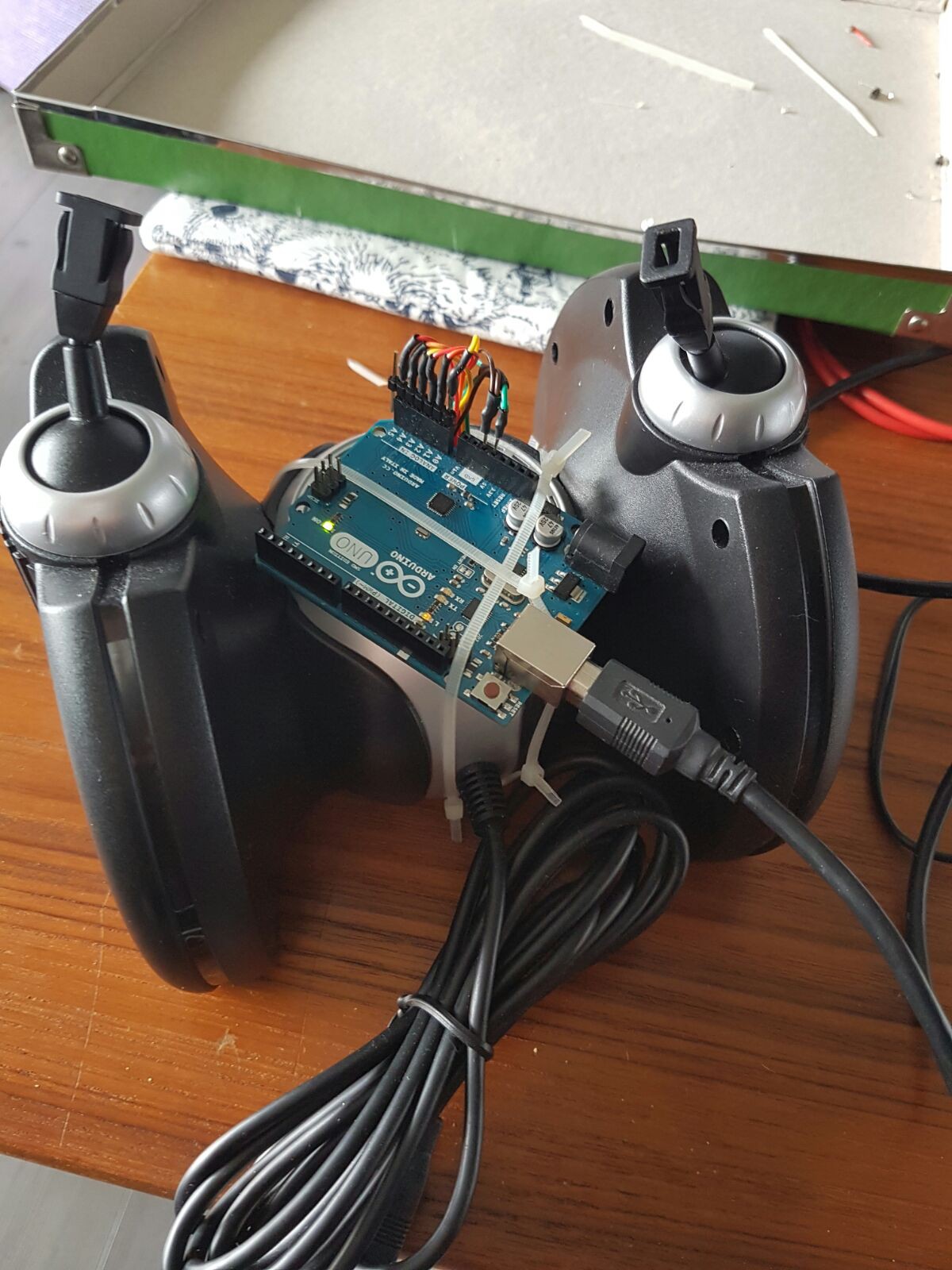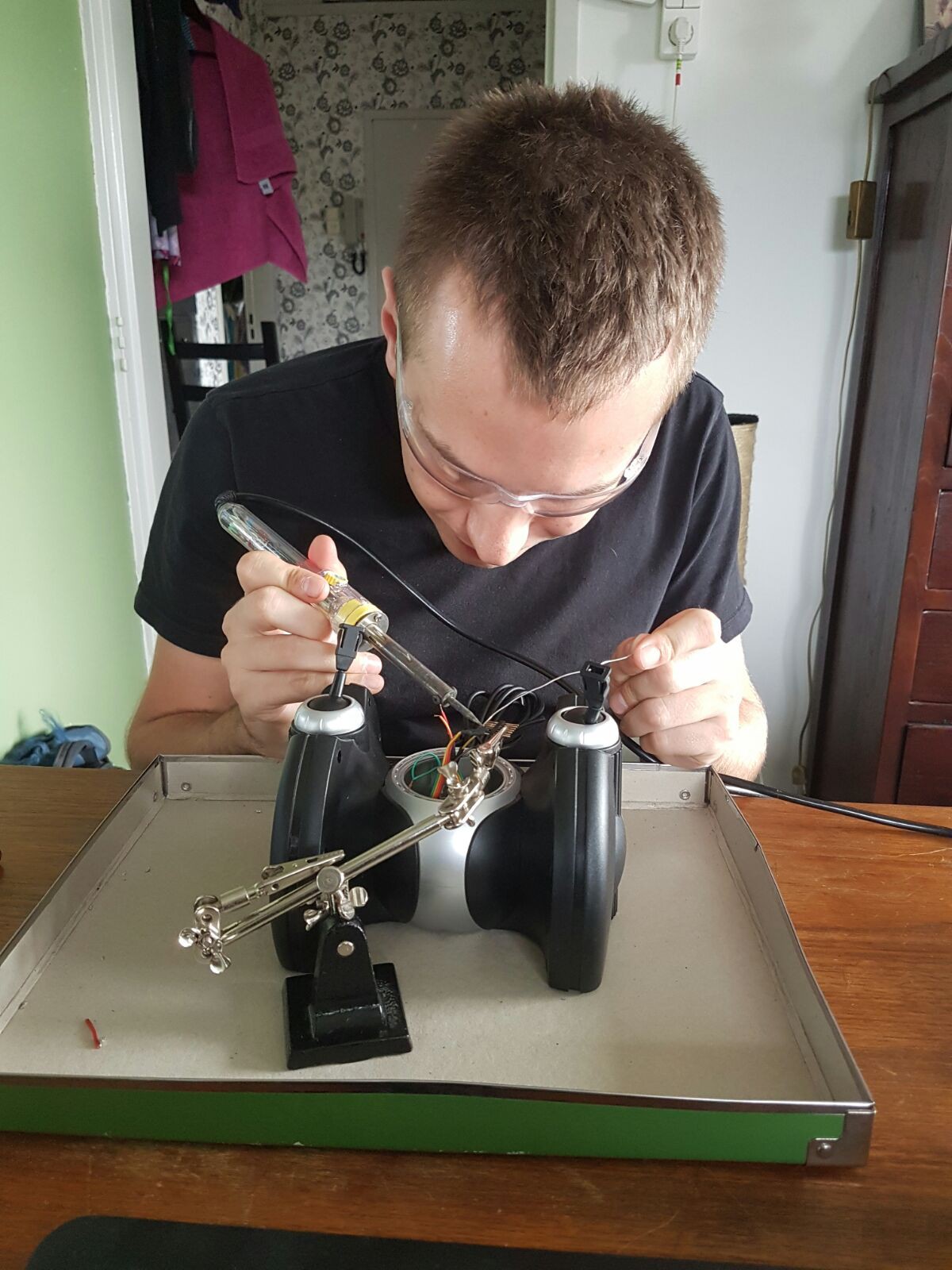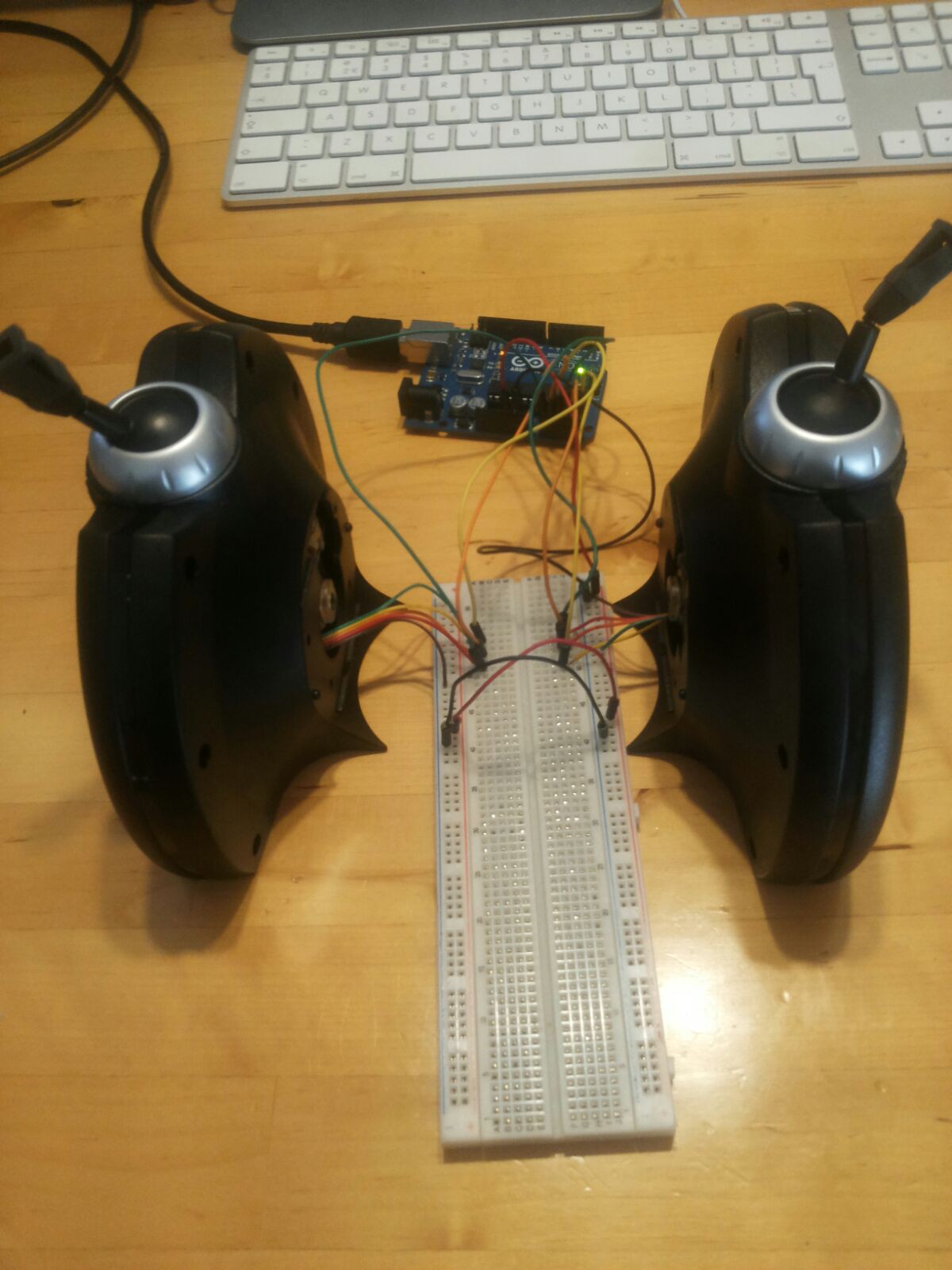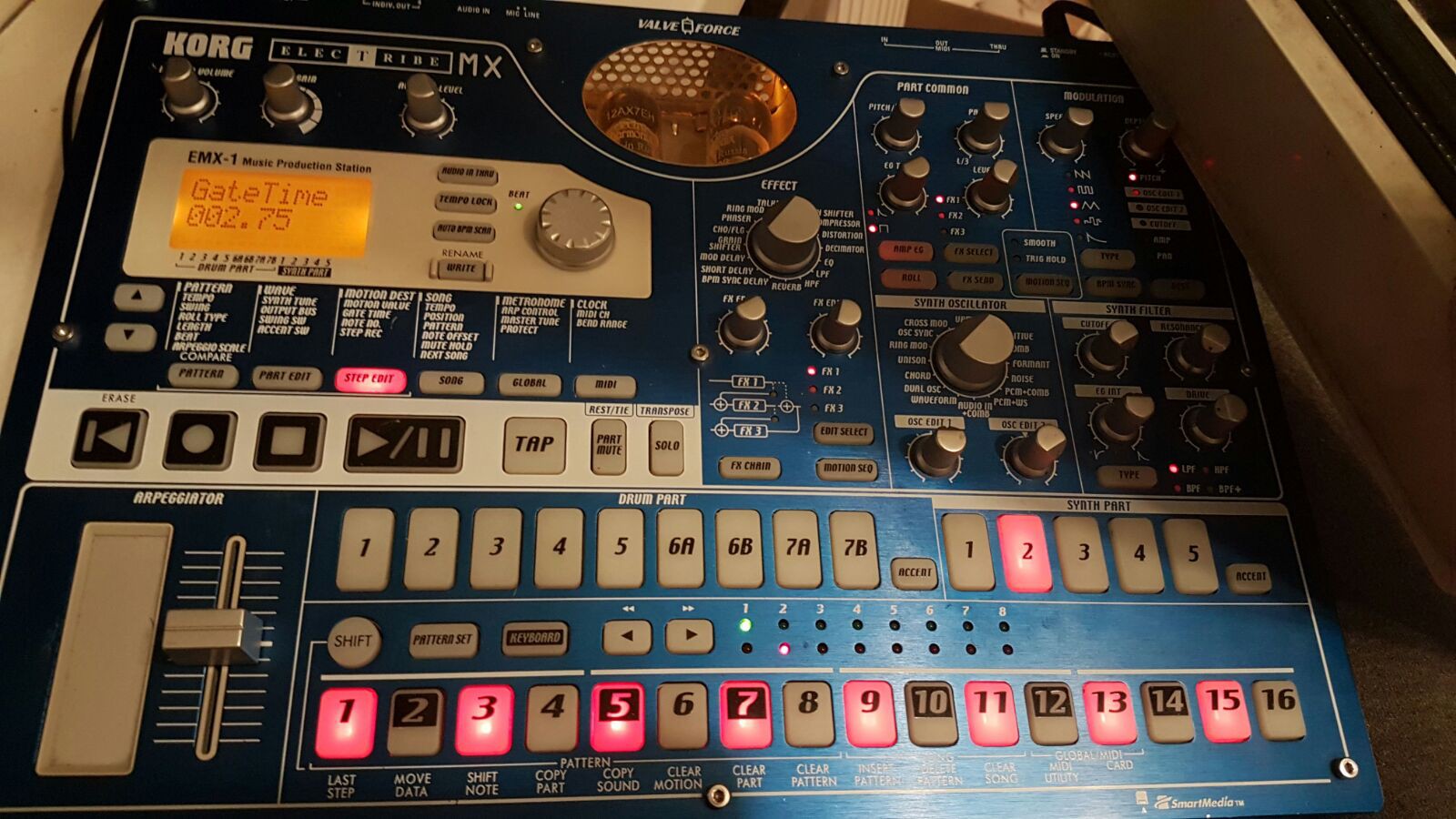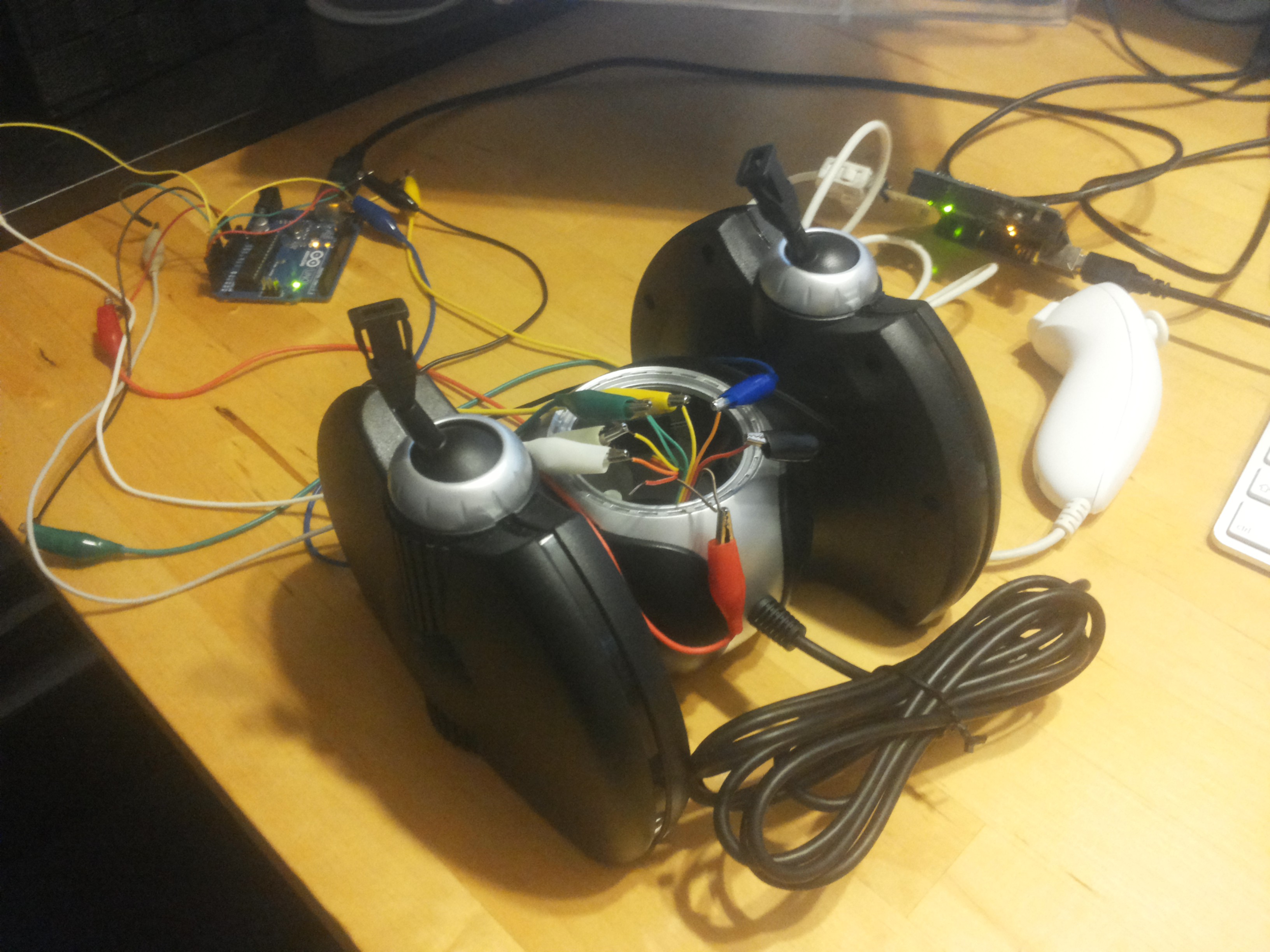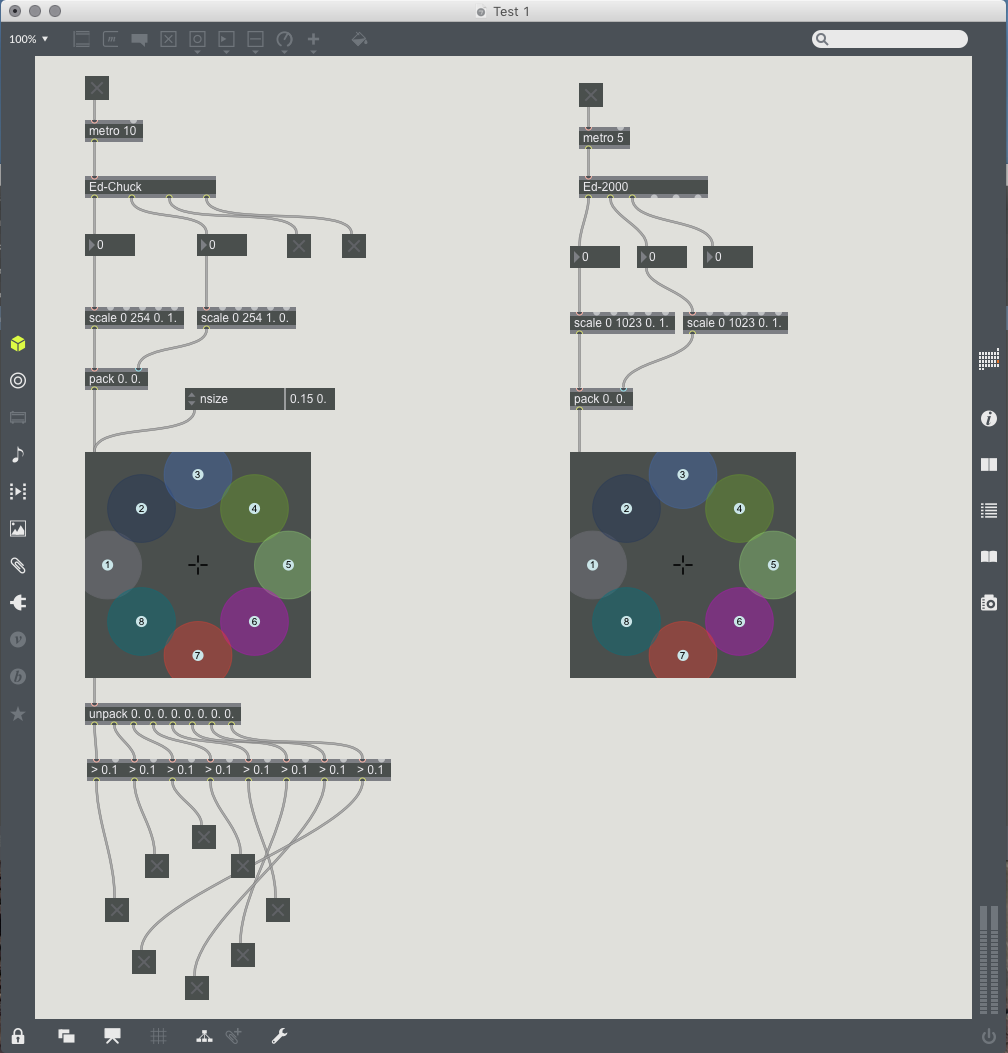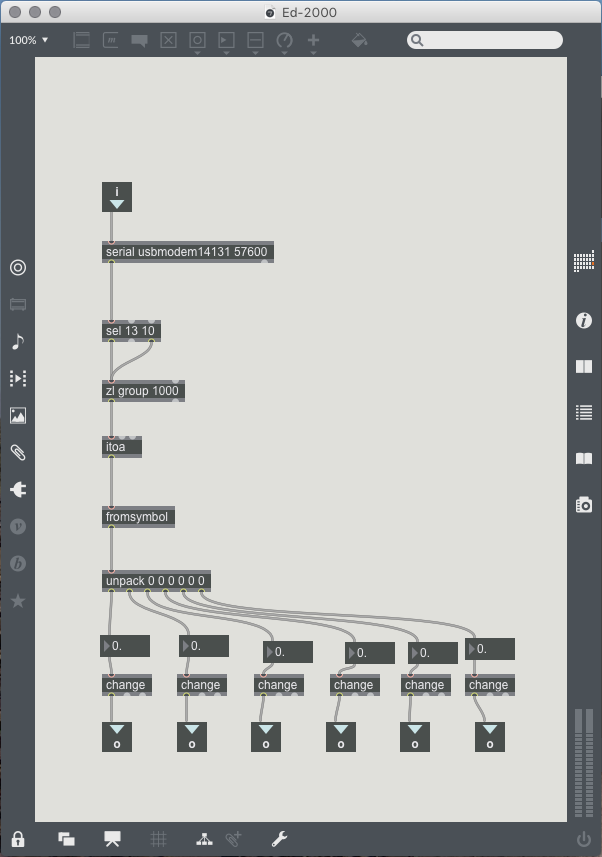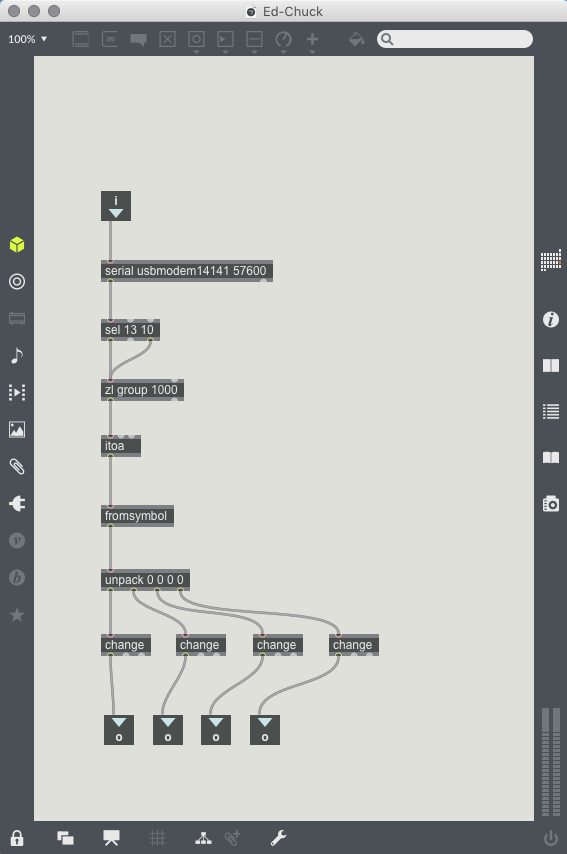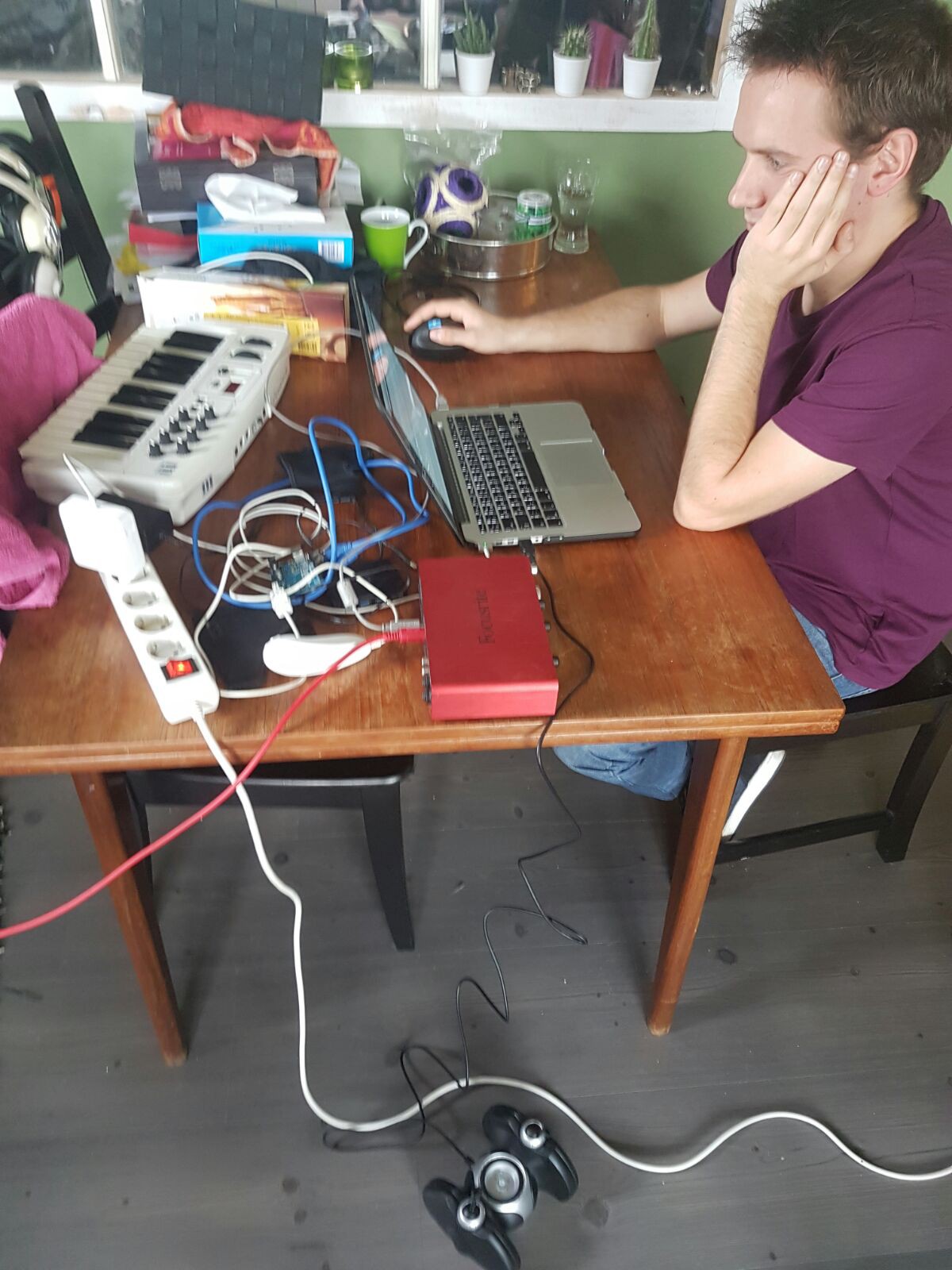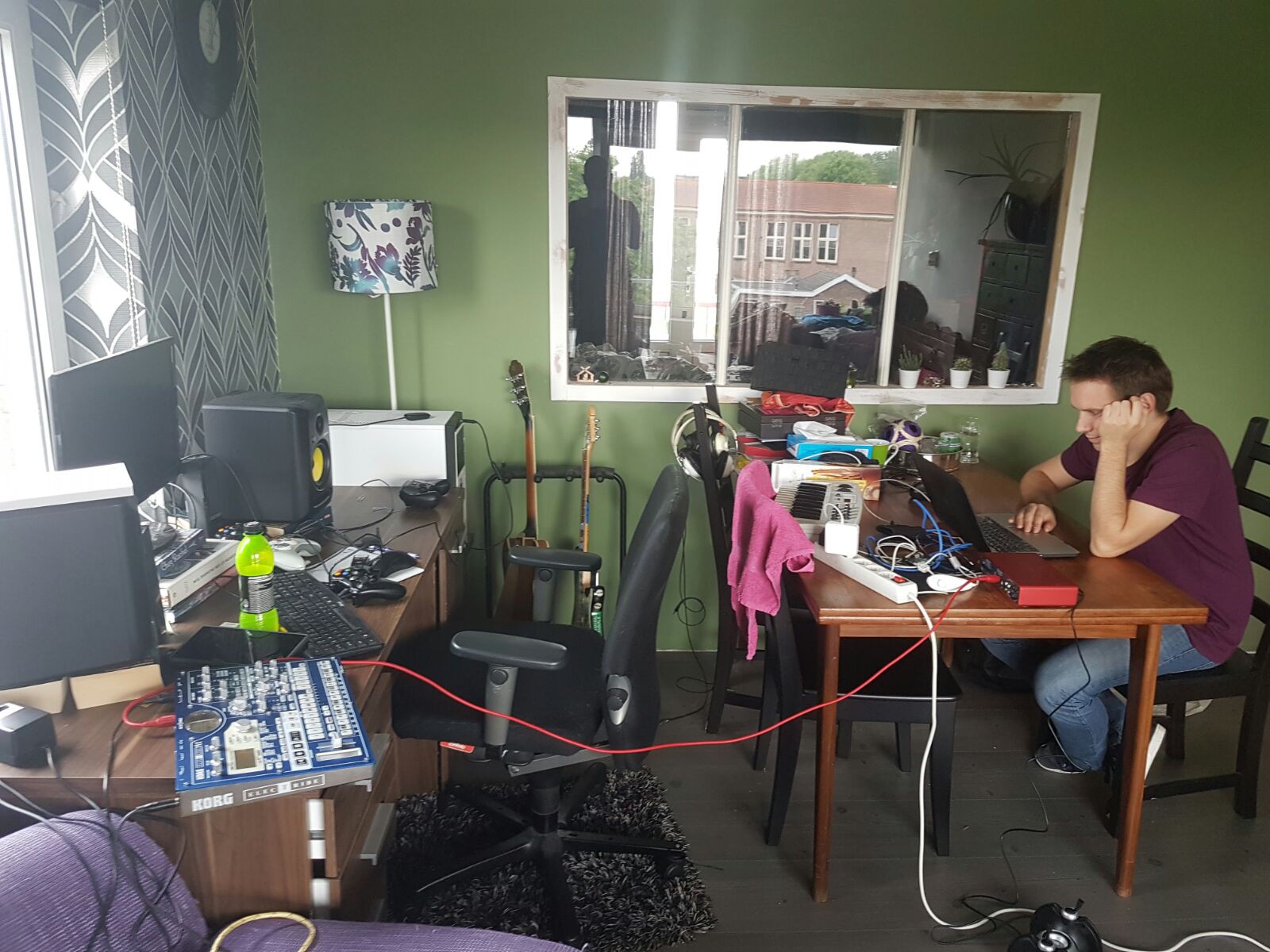-
Edt-Pedal and Edt-Presets
08/28/2016 at 21:23 • 0 commentsFinally, we had some time to work on the Edt-Pedal. Read about it on our blog!
-
Update!
08/22/2016 at 20:45 • 0 commentsWe have an update on our Github.io site! Not much has changed, but hey, we need to post something right.
https://edt-2000.github.io/2016-08-19-Creative-Coding-Amsterdam/
-
Edt-Trak v1 released!
07/25/2016 at 14:43 • 0 commentsWe still love Hackaday, but we have our own website now on github pages as it gives a bit more flexibility.
Please have a look and start building ;)
https://edt-2000.github.io/2016-07-25-Edt-Trak-first-release/
-
New website
07/24/2016 at 16:47 • 0 commentsWe had the idea that hackaday.io was not the optimum website format, so we decided to create a github pages! We will continue to update Hackaday.io but only with links to the blogposts on the website!
-
The Edt-2000 ecosystem
06/30/2016 at 21:17 • 0 commentsLast night we had a meeting about the direction of the project and things we encountered. In short, Thomas has been very busy creating all kinds of custom libraries and experiments with Sparkfun 'Things', wireless microcontroller that is cheap and has battery support build in. Edwin has been playing with EL-Wire and thinking about the system as a whole, mostly because he has been busy with lots of things.
Steven, as always, has been busy making electronic music and has ordered an extra Synthesizer: the Novation Mininova!
This thing is insane!
But, a bit more about the project which is called the Edt-2000; we are generating more and more names for each component!
Edt-Trak & Edt-Pedal
This is the starting point with the original idea: a modified GameTrak controller that can control midi instruments. Because we want to be able to switch between presets we are making a control pedalboard, so that it becomes easy to control stuff on stage with some simple foot switches. We haven't really figured out which switch does what, but hey; switches! Always fun!
Edt-Strobe & Edt-TOP & Edt-FadeLight
A good live show is nothing without cool lighting. We came up with 3 important elements: a stroboscope or bright LED that can be triggered, an Edt-Top (Tower of Power) that is simply a strip of LED's that can be placed easily anywhere on the stage and the Edt-FadeLights; a few simple bright RGB LED's (or DMX dimmers) that fade light in or out when you raise your hands (or do anything like that).
Edt-Chuck & Edt-Suit
We want the performers to have a cool suit, with lights and EL-Wire, just because we can. The Edt-Chuck will be a nunchuck controller that wirelessly communicates with the rest; and can be used to give more fine control over which parameters you control and what kind of things happen with the music and lights.
Edt-MOSCidi
We finish this log with the Edt-MOSCidi, which is also one of the most important components to create a flexible system. Through experiments we discovered that OSC is a fast and reliable protocol to use for our communications; but we do need a way to bring OSC messages into a midi device like the synth or the drum computer. A powerful Arduino (or maybe Netduino) will become a bridge between OSC messages and Midi messages, so that you could control your synth with only the Edt-Trak and the Edt-MOSCidi.
If you have some remarks, thoughts or ideas; please let us know, we are happy to help/discuss any questions you might have.
-
Pivotaltracker!
06/23/2016 at 21:33 • 0 commentsA quick update; as an experiment we want to use pivotaltracker to guide our development process with 'stories' and a backlog: DIY Scrum!
We have so many ideas but we need a way to capture those ideas into actionable stories that we can tick off in the coming months, while adding value to the Edt-2000 as a whole.
So, take a look, and let us know what you think:
-
Hacking away with the ESP8266 Wifi module
06/23/2016 at 08:43 • 0 commentsJust a quick update: our code-monkey Thomas is busy with hacking together a wireless wifi OSC unit! The main Edt-Trak module will still be wired to the network, but the rest of the components of the system need to be wireless.
For more info, go to the Wiki and have a look at the LAYOUT file. In a future update we will explain all our plans in a nice overview, first we need to go to some festivals to have some fun :)
-
Arduino's, Processing, OSC and more!
06/12/2016 at 10:19 • 0 commentsHi all, it's been a while but we haven't been idle; lots of new things to show!
First of all, the name of the project is now changed to the Edt-2000, to reference the inclusion of a new team member: Thomas! His programming skills are very valuable to the project!
Yesterday we had another session where we managed to get our first two instrumental controls working! We have build an 'AirDrum' and a pitch-bender! Very simple, but you have to start somewhere.
We also made some progress with the MaxMSP patches, which can be found on the Git page:
![]()
* a simple patch that receives OSC messages from a Processing sketch (this seems to work a lot better than receiving Serial messages in MaxMSP).
![]()
* The non-optimized patch for our AirDrummer as demonstrated in the video. The 'nodes' trigger once the XZ axis of the Edt-2000 hit them, so you have 3 trigger zones for each hand. We are not yet sure if this is a good way of triggering drums...
![]()
Sometimes simple tie-wraps work fine as well :)
![]()
Soldering headers onto the wires.
![]()
Building a second Edt-2000!
![]()
And last but not least: the machine that makes the sounds!
-
Arduino / FTDI problems
05/22/2016 at 09:00 • 0 commentsYesterday we had a lot of problems with running the Ed-2000 as fast as possible and together with the Ed-Chuck. MaxMSP kept crashing!
This morning, I simply cut out the Arduino Pro Mini with FTDI serial adapter and replaced it (a bit hacky) with another Arduino Uno I had laying around; and wow! No delay, no crashes, it just worked!
So; MaxMSP doesn't like an 8 years old FTDI serial adapter and prefers a newer Arduino Uno... Something to keep in mind next time :)
![]()
I also updated the examples/components in Max; they now display the movement of the joysticks without a noticeable delay! Nice!
The Ed-Chuck and Ed-2000 can be used as an Object in Max, with 4 / 6 outputs. We scale them to 0. -> 1. because the 'nodes' module works with these values. The colourful dots represent 'zones' that you can select, the ' > 0.1 ' triggers when the pointer enters the dot. (Play around with it a bit if you don't get what this patch does).
![]()
The Ed-2000 simply reads the serial, waits for endlines (Serial.println) and groups the values to convert and package so it can be unpacked in 6 different values. An important change is the 'change'; this filters out the repeating values we get from the Arduino.
![]()
The Ed-Chuck works very similar:
![]()
Next update next week... hopefully :)
-
MaxMSP session
05/21/2016 at 21:26 • 0 commentsJust a quick update after a day of trying all kinds of things with MaxMSP and a Korg Elektribe.
- MaxMSP is nice, but sometimes it's hard to find the correct components for what I want. Lots to learn!
- Using an old FTDI Serial adapter for an Arduino Pro Mini is a horrible idea! Spent half the day wondering why the serial connection was buggy! Turns out the drivers are not very reliable on newer Mac OS's...
- We have too many ideas!
So, I've uploaded all our patches to git, but it's far from finished. Maybe you can use it :)
![]()
![]()
We used a midi/audio interface to send midi to the drum computer, but since it was about 7 years ago I last used MaxMSP this was mostly an afternoon spend on learning how the program works..
* I've updated the Arduino code to use a serial speed of 57600, this seemed to work good with MaxMSP. 115200 was a bit buggy and somewhere online was the tip to use this value; it works well with the nunchuck (almost no delay)!
If you have Wii-Chuck adapter you can use the code in the git to connect your nunchuck :)
More info in next update! Somewhere next week!
Edt-2000: Expressive midi controller
Experiments to turn a 'GameTrak' controller into an expressive midi controller for live shows.
 Edwin Meijne
Edwin Meijne